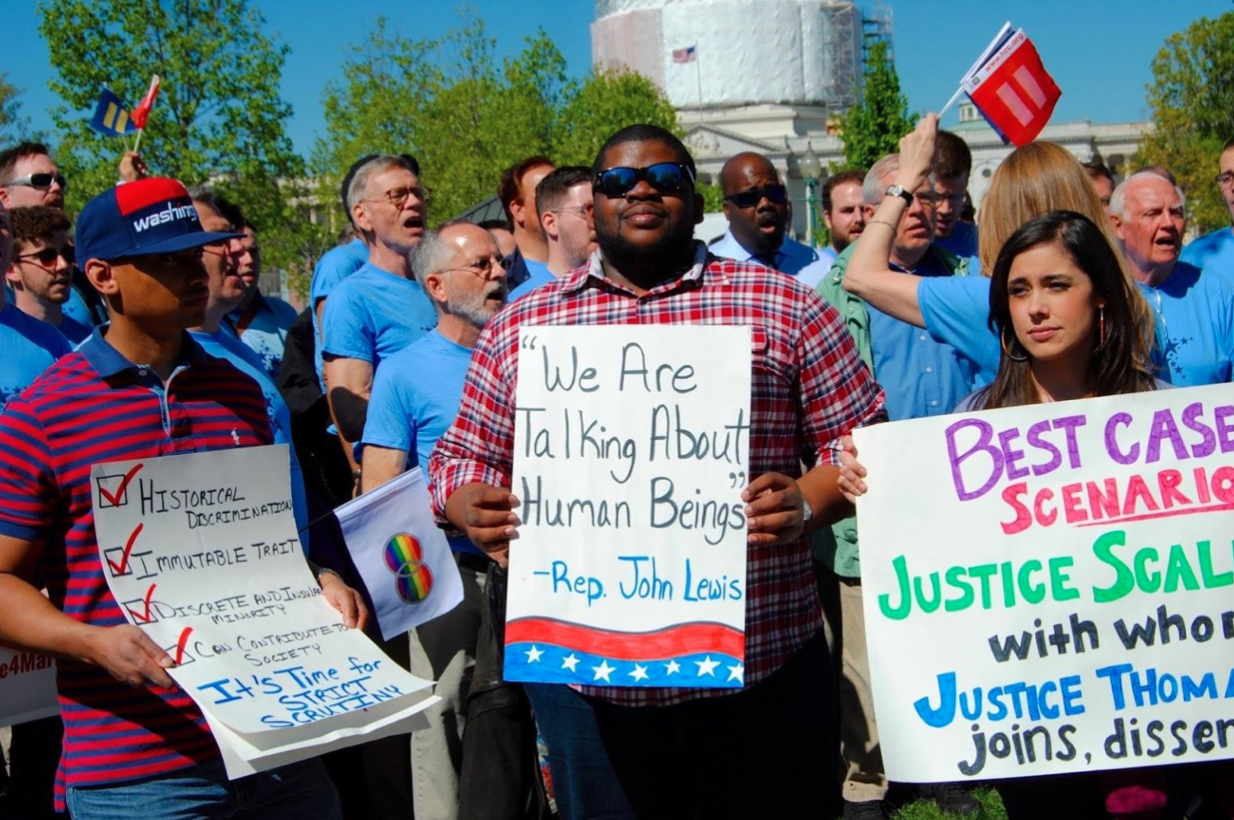Law 💼
8 resourcesSee Units
Establishing the Right for Same-Sex Couples to be Married

Quick Overview🏃♂️⌛️
In this case, the US Supreme Court decided 5-4 that same-sex marriage was protected by the Due Process and Equal Protection Clauses, both of which are part of the Fourteenth Amendment.
Case 👩⚖️
The case of Obergefell v Hodges unified four cases of same-sex marriage from the states of Ohio, Michigan, Tenessee, and Kentucky. This case was similar to the 2013 case United States v. Windsor, which addressed whether or not same-sex marriage was Constitutional. Obergefell v Hodges started with 14 same-sex couples, as well as two men with same-sex partners that had already passed on. Those individuals filed lawsuits within their home states saying that stopping same-sex marriage goes against their Fourteenth Amendment rights. The cases were as follows: Bourke v. Beshear in Kentucky, Tanco v. Haslam in Tennessee, DeBoer vs. Snyder in Michigan, and the case that gave the Supreme Court case it’s name, Obergefell v. Hodges in Ohio. Kentucky chose to defend the state’s right to stop same-sex marriage and The sentences are as follows for these cases, respectively: Kentucky chose to defend the state’s right to ban same-sexual marriage and to not recognize them, Tenessee defended the state right to decide if it would recognize same-sex marriage in different states, Michigan defended the state right to ban marriages between same-sex couples, and Ohio defended the state right to decide if it recognized same-sex marriage, just like Tenessee.
On April 28 of 2015, the US Supreme Court heard oral arguments for the case Obergefell v. Hodges, asking only two questions, both of which relate to the 14th Amendment. The first asked: does the 14th Amendment require states to license marriages that were between same-sex couples?. The second asked: does 14th Amendment required states to recognize same-sex marriages performed and licensed legally outside of that state?
Well, what is the 14th Amendment? 🤨
The 14th Amendment guarantees any and all United States citizen's protection equally under the law.
What is the Due Process Clause?🙋♀️
This clause expands the 5th Amendment's due process clause, stating that any and all levels of the American government have to be operating lawfully, including state and federal governments.
What is the Equal Protection Clause?❓
The Equal Protection Clause requires equal protection of all United States Citizens underneath the law.
What was the United States v Windsor Case?🤷♂️
This case, in short, brought down a part of the Defense of Marriage Act, ruling that same-sex couples that are legally married should be equally treated due to federal law including tax breaks, insurance benefits, Social Security, etc. Due to this decision, many states started legalizing marriage between same-sex couples.
🧨 Resulting Sentence 🎆
Marriage was for a long time defined as between man and women, and while states could come up with their own definitions, not all chose to, leading to unequal protection of same-sex marriage rights. Per the 14th amendment, states are required to license marriages between same-sex couples and recognize their marriage as legal when officiated out-of-State legally. This decision was upheld by the Supreme Court. The opinion was authored by Justice Anthony Kennedy along with Justice Ruth Ginsburg, Stephen Breyer, Sonia Sotomayor, and Elena Kagan joining in.
Here is part of Justice Anthony Kennedey’s opinion after describing the history of marriage and the stories of some of the plaintiffs:
“The cases now before the Court involve other petitioners as well, each with their own experiences. Their stories reveal that they seek not to denigrate marriage but rather to live their lives, or honor their spouses' memory, joined by its bond.”
The dissenting opinion was written by Chief Justice John G. Roberts, Jr., who was joined by Justice Antonin Scalia, Justice Clarence Thomas, and Justice Samuel A. Alito, Jr.
Here is part of Chief Justice John G. Roberts, Jr.’s dissenting opinion, joined by Justice Scalia and Justice Thomas:
“Petitioners make strong arguments rooted in social policy and considerations of fairness. They contend that same-sex couples should be allowed to affirm their love and commitment through marriage, just like opposite-sex couples. That position has undeniable appeal; over the past six years, voters and legislators in eleven States and the District of Columbia have revised their laws to allow marriage between two people of the same sex.
Long-Term Impact
Same-sex marriage is now legal within the United States, meaning that any ban on same-sex marriage is labeled as unconstitutional. Additionally, states must formally recognize same-sex marriages that were legally performed outside of that state. This is labeled as a landmark case because it is one of the most important pieces of legislation for LGBTQ+ marriage rights.
Reference Articles:
Fiveable Resources
Connect with other students studying Landmark Cases with Hours!
Browse Study Guides By Unit
👨⚖️Landmark Cases
📜The Amendments
📜Bill of Rights

Fiveable
Resources
© 2023 Fiveable Inc. All rights reserved.